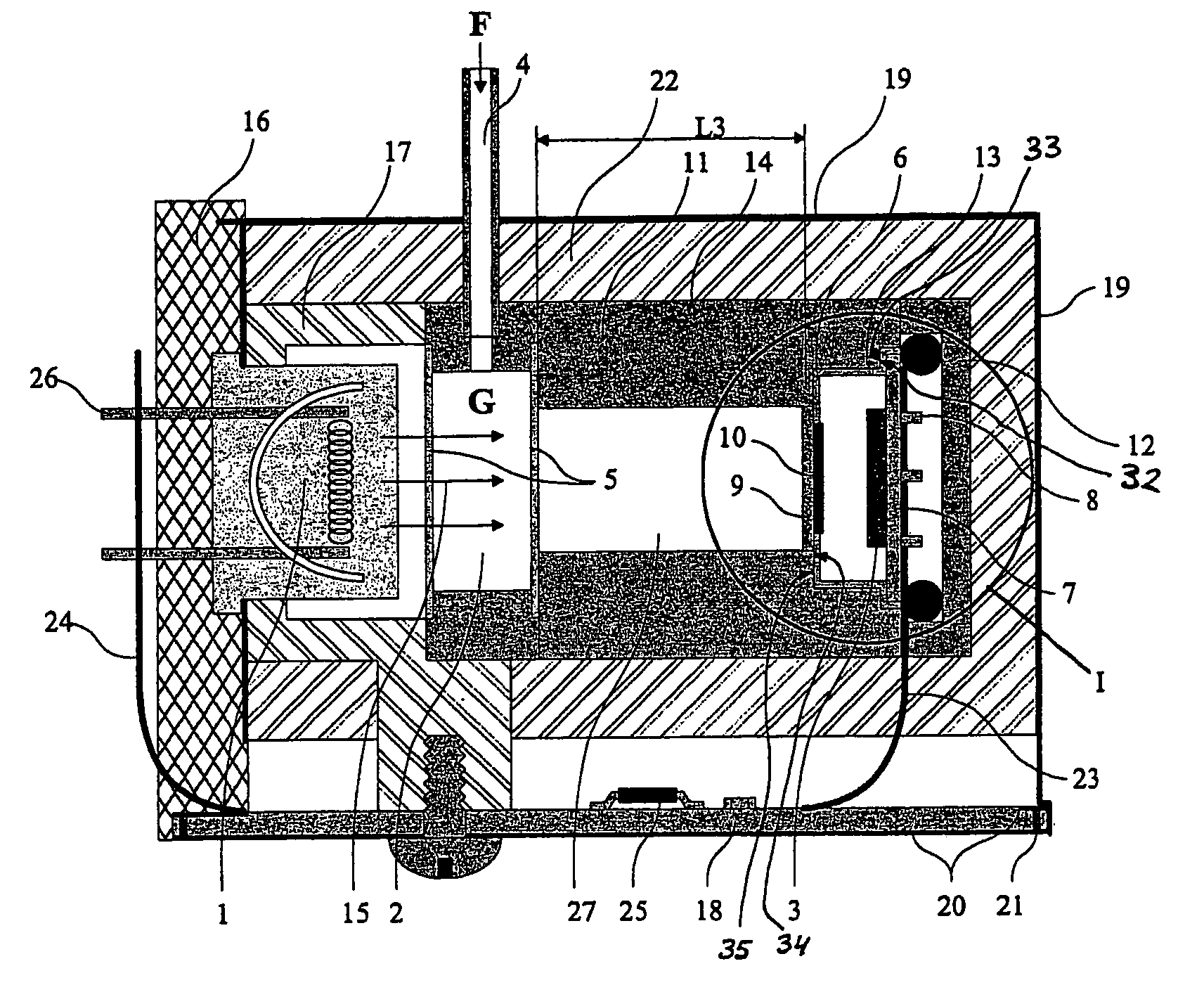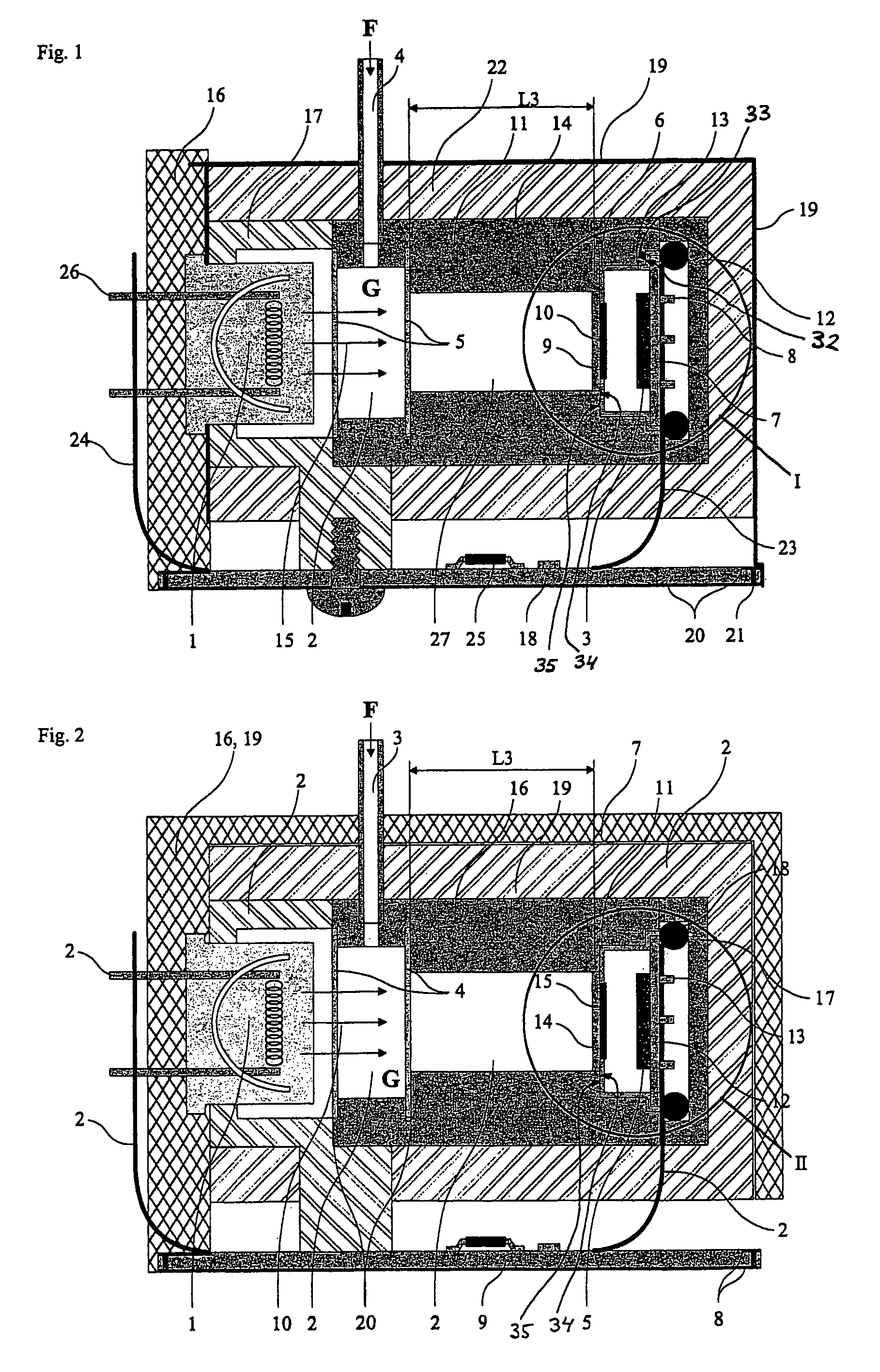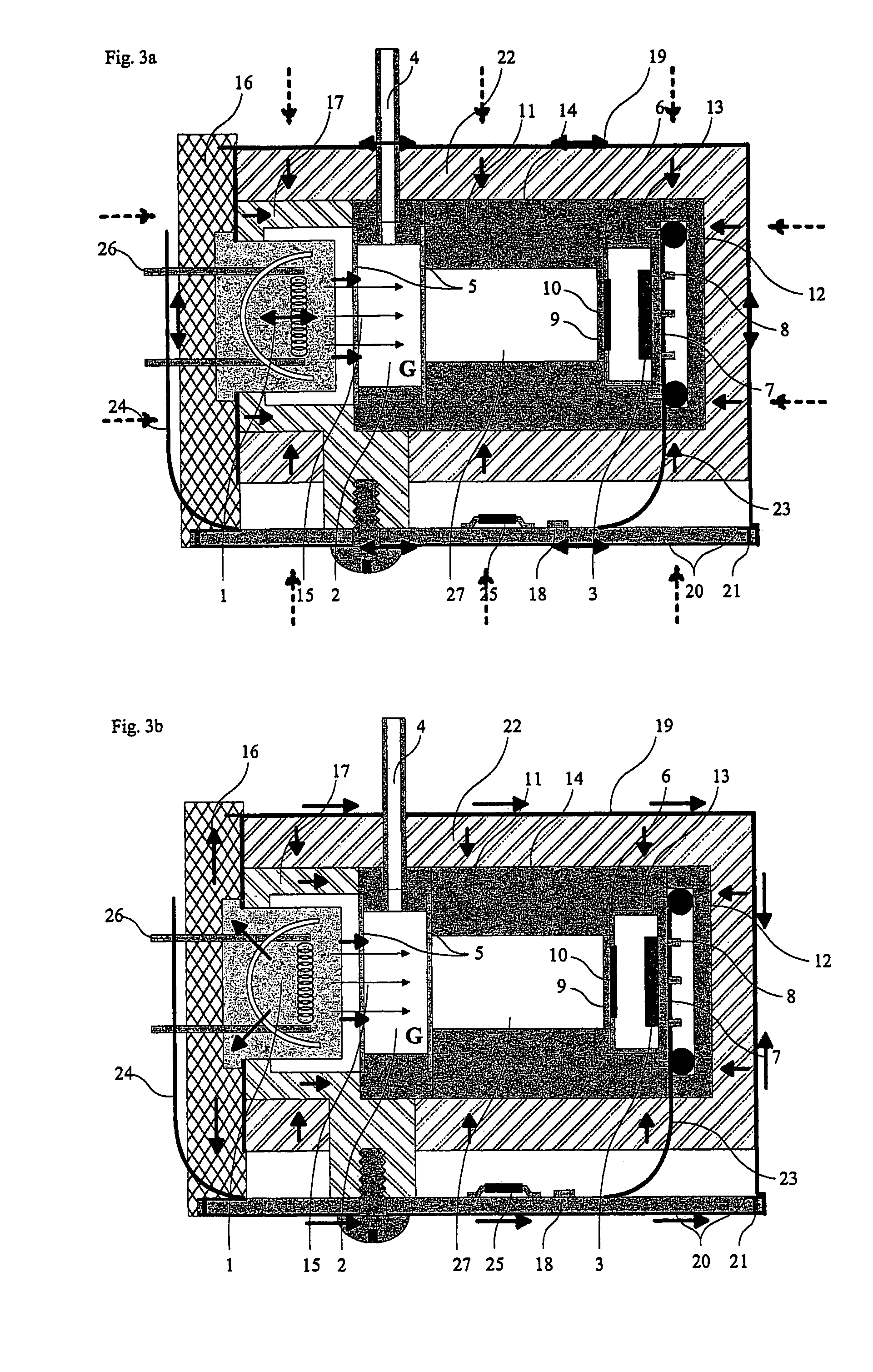Method and apparatus for eliminating and compensating thermal transients in gas analyzer
a gas analyzer and thermal transient technology, applied in the direction of material thermal analysis, material analysis using sonic/ultrasonic/infrasonic waves, material thermal analysis, etc., can solve the problems of reducing measurement accuracy, affecting the detection effect, etc., to achieve good thermal conductivity
- Summary
- Abstract
- Description
- Claims
- Application Information
AI Technical Summary
Benefits of technology
Problems solved by technology
Method used
Image
Examples
Embodiment Construction
[0024]The small sized or miniature gas analyzers for analyzing, e.g. measuring the concentration of one or several gas components are shown in figures. The analyzer comprises a measuring volume 2, made of metal, e.g. aluminum or copper or a plastic or a polymer, between the infrared source 1 and the detector(s) 3. The measuring volume has connections 4 for input and output flow (not shown) of a sample gas mixture G. The measuring volume 2 can be a closed measuring chamber. Alternatively the measuring volume 2 can be a generally open space, i.e. a substantially non-bordered room open to ambience, whereupon the flow F of the gas mixture G into and out of this non-bordered room is caused e.g. by natural movements in the surrounding atmosphere. The measuring volume has first and second ends 5 transparent to radiation. Concerning the embodiment provided with the measuring chamber these transparent ends are typically two windows forming the ends of the volume 2. The two windows forming sa...
PUM
| Property | Measurement | Unit |
|---|---|---|
| thickness | aaaaa | aaaaa |
| thickness | aaaaa | aaaaa |
| temperature | aaaaa | aaaaa |
Abstract
Description
Claims
Application Information
 Login to View More
Login to View More - R&D
- Intellectual Property
- Life Sciences
- Materials
- Tech Scout
- Unparalleled Data Quality
- Higher Quality Content
- 60% Fewer Hallucinations
Browse by: Latest US Patents, China's latest patents, Technical Efficacy Thesaurus, Application Domain, Technology Topic, Popular Technical Reports.
© 2025 PatSnap. All rights reserved.Legal|Privacy policy|Modern Slavery Act Transparency Statement|Sitemap|About US| Contact US: help@patsnap.com



